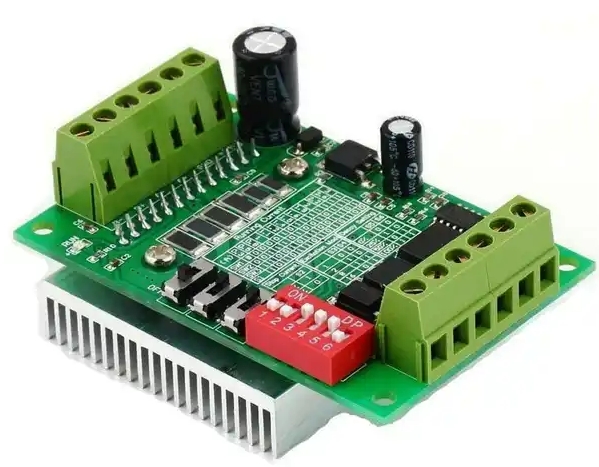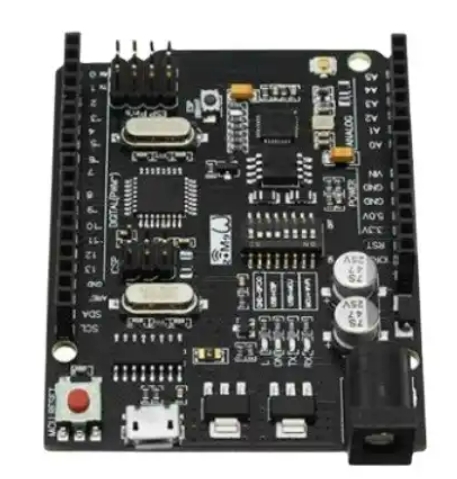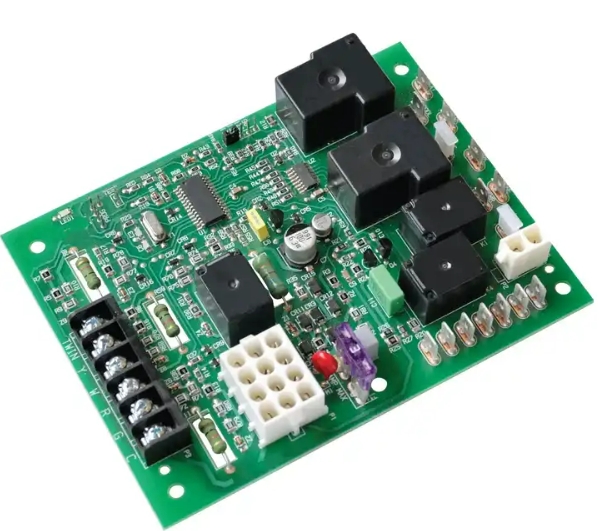Motor Driver PCB Layout Guidelines
In the design of motor drivers, PCB layout is a crucial task. Good layout design can enhance motor performance, improve stability, reduce electromagnetic interference (EMI) and reduce costs. This article will provide you with guidelines for motor driver PCB layout to help you optimize your design.
Fumax provides diversified OEM and ODM services to customers around the world.
One-stop service including circuit board PCBA design, PCBA customization, software programming, SMT patching, DIP welding, component procurement, PCB assembly testing and painting, etc.

Motor drive ICs deliver large amounts of current and dissipate large amounts of electrical energy. Typically, energy is dissipated into the copper areas of the printed circuit board (PCB). To ensure adequate cooling of the PCB, special PCB design technology is required. You will be given some general PCB design advice for motor driver ICs.
PCB demand analysis
First of all, it is necessary to clarify the requirements and parameters of the motor driver, including power, voltage, current, control method, etc. This helps determine the overall functionality and required interfaces of the motor driver. At the same time, factors such as the drive’s performance requirements, operating environment temperature, noise level, and size constraints must be considered.

PCB material selection
Select the appropriate PCB material based on the needs and parameters of the motor driver. Commonly used PCB materials include FR4, CEM-1, aluminum substrate, etc. Factors such as electrical performance, mechanical strength, heat resistance, cost, etc. need to be considered when selecting.
PCB size determination
Determine the size and shape of the PCB according to the size requirements of the motor driver and the external connection interface. At the same time, the space requirements for the layout and wiring of components on the PCB should be taken into consideration to ensure that the size of the PCB is reasonable.
PCBA layout planning
Carry out overall layout planning based on the location and connection relationships of power supplies, signal lines, radiators and other components. Reasonably arrange the placement of components, reduce wiring length, and reduce electromagnetic interference.

Divide the motor driver board into different functional areas, such as power supply area, control logic area, power output area, etc. At the same time, determine the location and layout of each area to ensure signal integrity and electromagnetic compatibility between different functional modules.
- Power supply area: Place the power supply section in a separate area to facilitate power management and reduce electromagnetic interference.
- Control logic area: Place the control logic part in a relatively independent area to avoid interference with the power part.
- Power output area: Place the power output part in a relatively concentrated area to facilitate heat dissipation and reduce electromagnetic interference.
- Component layout: According to the circuit functional requirements, the layout design is carried out according to the signal flow and electromagnetic characteristics. Place key components first (such as CPU, DSP, MOS tube, etc.), and then place other components. Pay attention to the distance between components and the wiring method to reduce electromagnetic interference.
- Pin positioning: According to the interface and external connection requirements of the motor driver, determine the position and layout of the pins to facilitate connection with other circuit boards.
- Consider signal integrity and electromagnetic compatibility: During layout design, signal integrity issues and electromagnetic compatibility issues need to be considered. Isolate or shield components that may cause interference, and optimize the routing of signal lines to reduce signal loss and noise interference.
- Thermal design: Carry out a reasonable thermal design based on the power and heat dissipation requirements of the motor driver. Determine the location and connection of the heat sink, taking into account the placement of components on the PCB to make full use of the heat dissipation channels.
- Review and optimization: After completing the layout design, review and optimize it. Check for errors or omissions and optimize trace and component layout to improve system performance and stability.

Cabling design
- Power cord: Select the appropriate wire diameter and connection method according to the specifications and quantity of the power module. At the same time, the distribution position and wiring method of the power cord should be considered to reduce the internal resistance of the power supply and electromagnetic interference.
- Signal lines: According to the functional requirements of the circuit, rationally design the routing of signal lines. Signal lines should be as short and straight as possible, avoiding bends and crossovers to reduce signal loss and noise interference.
- Ground wire: Choose an appropriate grounding method, such as single-point grounding or multi-point grounding. The grounding wire should be as thick and short as possible to reduce grounding resistance and electromagnetic interference.
- Shielded wires: For signal lines or power lines that may cause electromagnetic interference, shielded wires should be used for protection. The shielding layer of the shielded wire should be connected to the signal ground wire to fully exert the shielding effect.
- Interface connection: Ensure that the interface connection with other circuit boards is reliable, stable and easy to operate. Interface signal lines should avoid bending and crossing to reduce signal loss and noise interference.